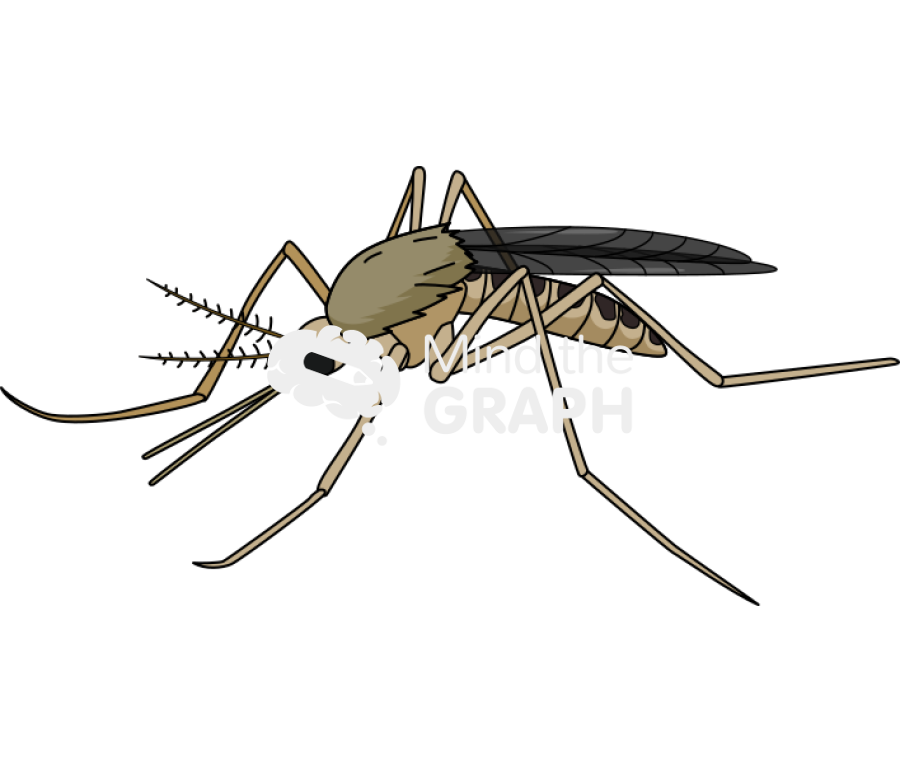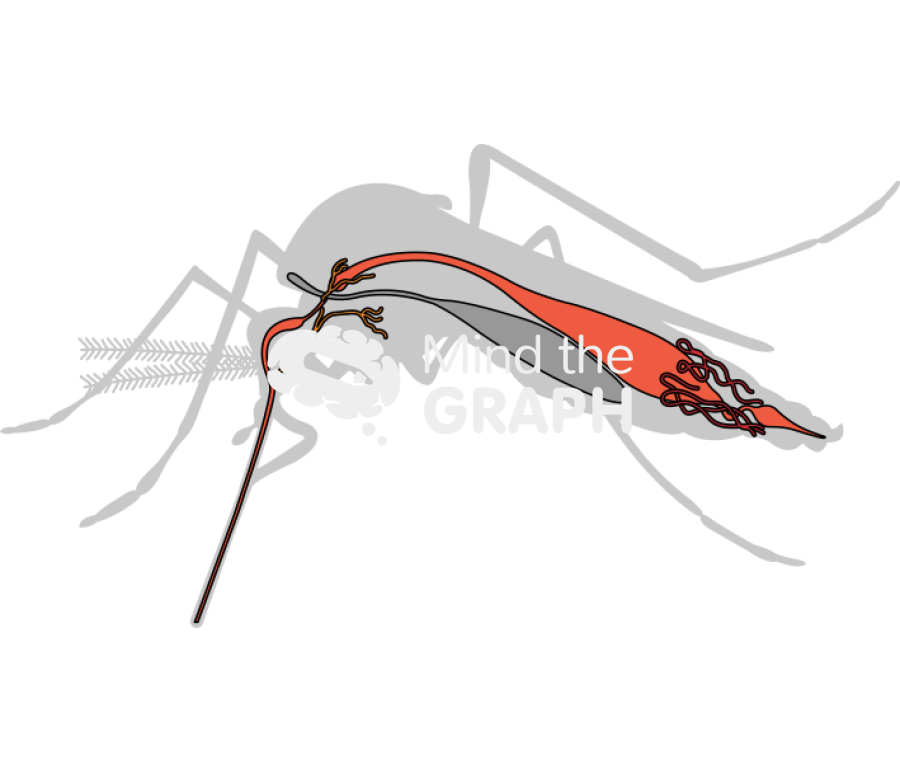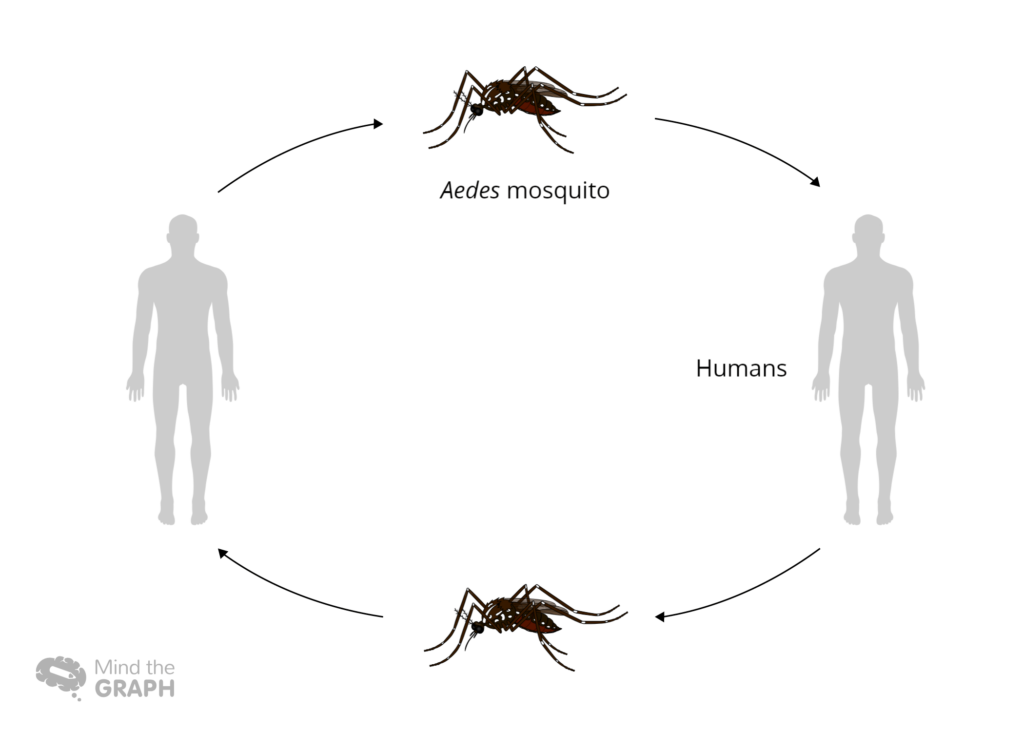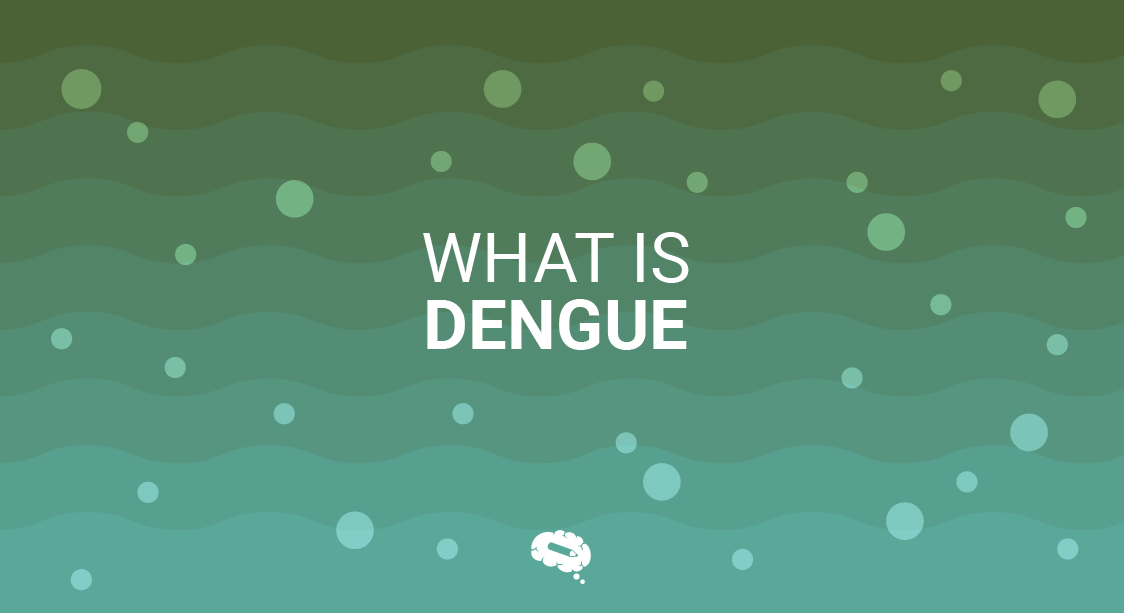A tiny but powerful menace lurks in tropical and subtropical regions: the Aedes mosquito. While its size may deceive, its bite can unleash a formidable foe known as dengue fever. Dengue, a viral illness transmitted through the bite of infected mosquitoes, has become a significant public health concern, affecting millions annually. Dengue affects people of all ages and backgrounds. Its symptoms, ranging from fever and severe headaches to joint pain and fatigue, can disrupt lives and, in severe cases, even endanger them. Understanding dengue is about recognizing the threat these tiny insects pose and taking proactive steps to protect ourselves and our communities.
What Is Dengue?
Dengue is a viral infection transmitted primarily by mosquitoes, particularly the Aedes species, most commonly Aedes Aegypti. The virus responsible for dengue belongs to the Flaviviridae family, and there are four distinct serotypes (DEN-1, DEN-2, DEN-3, and DEN-4). Dengue fever is prevalent worldwide in tropical and subtropical regions, with outbreaks occurring in areas where the Aedes mosquito thrives.

Dengue is often compared to other mosquito-borne diseases such as malaria, Zika virus, and chikungunya. While these diseases share some similarities, they also have distinct features:
Malaria: This is caused by parasites of the Plasmodium genus and is transmitted through the bite of infected Anopheles mosquitoes. Unlike dengue, which is caused by a virus, malaria is a parasitic disease. Symptoms of malaria include fever, chills, sweating, muscle aches, and fatigue. If not promptly treated, malaria can lead to severe complications and even death.

Zika Virus: Zika is another mosquito-borne viral infection transmitted primarily by Aedes mosquitoes, similar to dengue. However, Zika virus infection is often milder, with symptoms including fever, rash, joint pain, and conjunctivitis (red eyes). One of the most concerning aspects of Zika virus infection is its association with birth defects, particularly microcephaly, when contracted by pregnant women.

Chikungunya: Chikungunya is caused by the Chikungunya virus and transmitted by Aedes mosquitoes. Symptoms of chikungunya include fever, severe joint pain, muscle pain, headache, nausea, fatigue, and rash. While chikungunya is rarely fatal, the joint pain can be debilitating and persist for months or even years in some cases.

Causes Of Dengue
What is dengue primarily caused by? Dengue fever is primarily caused by the dengue virus (DENV), a member of the Flaviviridae family. This virus exists in four distinct serotypes, namely DEN-1, DEN-2, DEN-3, and DEN-4. When an Aedes mosquito, particularly Aedes Aegypti and Aedes Albopictus, bites a person infected with the dengue virus, it becomes a carrier of the virus itself. These mosquitoes are commonly found in urban and semi-urban areas, breeding in stagnant water sources like uncovered water containers, discarded tires, and flower pots.

Transmission Of Dengue
How Dengue Spreads
Dengue fever spreads primarily through the interplay between mosquitoes and humans, establishing a transmission cycle that perpetuates the disease. It begins when an Aedes mosquito bites an infected person, ingesting the virus during a blood meal. Over about a week, the virus multiplies within the mosquito’s body, eventually infecting its salivary glands. Once infected, the mosquito becomes a vector capable of transmitting the virus to new hosts. When this infected mosquito bites another person, it injects the dengue virus into their bloodstream, initiating a new infection cycle. This human-to-mosquito-to-human transmission cycle drives the spread of dengue fever, particularly in urban areas where Aedes mosquitoes thrive.

Factors Contributing To Spread
Several factors contribute to the spread of dengue fever, with climate conditions and geographic factors playing significant roles. Warmer temperatures accelerate mosquito development and shorten the virus’s incubation period, while heavy rainfall creates stagnant water pools ideal for mosquito breeding. Urbanization, travel, and trade also facilitate transmission, as densely populated areas with inadequate sanitation provide breeding sites, and globalization allows infected individuals to carry the virus to new regions. Together, these factors create conditions conducive to dengue fever transmission and expansion.
Symptoms And Diagnosis
Symptoms
Recognizing the early symptoms of dengue fever is crucial for timely diagnosis and treatment. Here’s a list of common symptoms to watch for:
High Fever: Dengue fever typically begins with a sudden onset of high fever, often reaching 104°F (40°C) or higher.
Severe Headaches: Intense headaches, sometimes described as “behind the eyes,” are common early symptoms of dengue fever.
Pain Behind the Eyes: Many individuals with dengue fever experience pain or discomfort behind their eyes, often worsening with eye movement.
Muscle and Joint Pain: Dengue fever can cause severe muscle and joint pain, often likened to aching or throbbing sensations throughout the body.
Fatigue: Feelings of extreme tiredness and lethargy are common early symptoms of dengue fever, often accompanied by a lack of energy or motivation.
Nausea and Vomiting: Some individuals with dengue fever may experience nausea, vomiting, or a general feeling of gastrointestinal discomfort.
Skin Rash: A rash may develop on the skin of individuals with dengue fever, typically appearing a few days after the onset of fever. The rash may be red or flushed in appearance and may spread across the body.
Mild Bleeding: In some cases, individuals with dengue fever may experience mild bleeding from the nose or gums, as well as easy bruising.
Professional Diagnosis
Prompt and accurate diagnosis of dengue fever is crucial for effective patient management and preventing complications like dengue hemorrhagic fever (DHF) or dengue shock syndrome (DSS). Healthcare providers must consider clinical and laboratory findings to diagnose and determine the best treatment. Healthcare professionals use several tests and procedures for diagnosing dengue fever:
Clinical Evaluation: Healthcare providers assess the patient’s symptoms, medical history, and recent travel history to determine the likelihood of dengue fever. Common symptoms such as high fever, severe headaches, muscle and joint pain, and rash are indicative but not specific to dengue fever.
Physical Examination: A thorough physical examination may reveal characteristic signs of dengue fever, such as flushing of the skin, swollen lymph nodes, and signs of dehydration.
Blood Tests: Laboratory testing of blood samples is crucial for confirming the diagnosis of dengue fever. The following blood tests are commonly used:
Dengue NS1 Antigen Test: This test detects the presence of the dengue virus NS1 antigen in the bloodstream, typically during the early stages of infection (within the first week of symptom onset).
Dengue IgM Antibody Test: This test detects the presence of dengue-specific IgM antibodies produced by the immune system in response to the virus. IgM antibodies are typically detectable a few days after the onset of symptoms and persist for several weeks.
Dengue IgG Antibody Test: This test detects the presence of dengue-specific IgG antibodies, which are produced later in the course of infection and may persist for months to years. IgG antibodies indicate a past dengue infection or recent vaccination.
Complete Blood Count (CBC): A CBC may reveal characteristic changes in blood cell counts, such as leukopenia (low white blood cell count) and thrombocytopenia (low platelet count), which are common in dengue fever.
Serological Tests: Serological tests, such as the hemagglutination inhibition (HI) test and the plaque reduction neutralization test (PRNT), may be performed to confirm the presence of dengue antibodies and determine the infecting dengue virus serotype.
Treatment And Recovery
Managing Dengue Symptoms
There is no specific medication for treating dengue. Most individuals recover within approximately a week, but the symptoms can be managed with a combination of self-care measures and monitoring for signs of complications. Here is a description of home care for dengue fever, along with guidelines on when to seek medical attention:
Rest: Adequate rest is essential for allowing the body to recover from dengue fever. Patients should rest in a cool and comfortable environment to alleviate symptoms such as fever and fatigue.
Hydration: Drinking plenty of fluids, such as water, electrolyte-rich beverages, and oral rehydration solutions, helps prevent dehydration and replenishes fluids lost due to fever, sweating, and vomiting.
Dietary Considerations: Consuming small, frequent meals that are easy to digest can help alleviate nausea and maintain adequate nutrition. Avoiding spicy, greasy, or heavy foods may also help prevent gastrointestinal discomfort.
While home care measures can help alleviate mild to moderate symptoms of dengue fever, it’s important to seek medical attention if any of the following occur:
- Severe or persistent abdominal pain
- Persistent vomiting that prevents oral fluid intake
- Signs of dehydration, such as dark urine, dry mouth, or dizziness
- Difficulty breathing or chest pain
- Persistent high fever (above 104°F or 40°C)
- Severe headache, confusion, or neurological symptoms
- Signs of bleeding, such as nosebleeds, bleeding gums, or blood in urine or stool
- Development of rash, especially if it worsens or spreads rapidly
- Symptoms suggestive of dengue hemorrhagic fever (DHF) or dengue shock syndrome (DSS), such as severe abdominal pain, persistent vomiting, rapid breathing, cold or clammy skin, and weak pulse
Prevention And Control
Preventive Measures
Preventive measures play a crucial role in reducing the transmission of dengue fever by preventing mosquito bites and reducing mosquito populations. Here are steps individuals can take to protect themselves and their communities:
Use Mosquito Repellents: Apply insect repellents containing DEET, picaridin, or oil of lemon eucalyptus to exposed skin and clothing to repel mosquitoes. Reapply repellent as needed, following the product instructions.
Wear Protective Clothing: Wear long-sleeved shirts, long pants, socks, and closed-toe shoes to minimize exposed skin and reduce the risk of mosquito bites, especially during peak mosquito activity times, such as dawn and dusk.
Use Mosquito Nets: Sleep under mosquito nets, particularly where mosquito-borne diseases like dengue fever are prevalent. Ensure the mosquito nets are properly installed and free of holes or tears.
Eliminate Standing Water: Mosquitoes breed in stagnant water, so eliminate sources of standing water around the home, such as flower pots, bird baths, clogged gutters, and discarded containers. Empty and clean water storage containers regularly to prevent mosquito breeding.
Cover Water Storage Containers: Cover water storage containers tightly to prevent mosquitoes from laying eggs in them. Use lids, screens, or mesh covers to seal containers and prevent access by mosquitoes.
Keep Surroundings Clean: Maintain a clean and tidy environment by regularly disposing of trash and debris, which can collect water and provide breeding sites for mosquitoes. Trim overgrown vegetation and mow lawns to reduce resting places for mosquitoes.
Install Screens: Install screens on windows, doors, and vents to prevent mosquitoes from entering indoor spaces while allowing for ventilation. Repair damaged screens and ensure a tight fit to prevent gaps where mosquitoes can enter.
For more expert advice on preventing dengue, explore the CDC’s comprehensive guidelines.
Vaccines
In regions where dengue fever is common, there are vaccines to prevent Dengue fever. One of them is the Dengvaxia vaccine which is approved for individuals aged 9 to 45 who have previously had dengue fever. It is administered in three doses over 12 months. The vaccine is only for those with a documented history of dengue or a positive blood test for the virus. For those without prior dengue infection, the vaccine may increase the risk of severe dengue and hospitalization in the future.
The dengue vaccine, QDENGA® (TAK-003), is used to prevent dengue caused by any of the four virus serotypes in individuals aged 4 to 60 years. QDENGA® should be used according to the official recommendations of the regulatory agency. It is suitable for people with or without prior exposure to dengue and does not require pre-vaccination testing.
Public Health Strategies
Public health strategies for combating dengue fever involve collaborative efforts between communities and governments, focusing on mosquito surveillance and control, community engagement and education, environmental management, healthcare infrastructure strengthening, vector control programs, international collaboration, and surveillance and early warning systems. These initiatives aim to reduce mosquito populations, prevent dengue transmission, strengthen healthcare systems, and promote community awareness and engagement in dengue prevention. By implementing comprehensive strategies that address both environmental and social determinants of dengue transmission, countries can effectively reduce the burden of dengue fever and protect public health.
Your Creations, Ready within Minutes!
Mind the Graph provides a diverse array of customizable templates, icons, and design elements, enabling users to bring their ideas to life effortlessly. Whether creating figures for research papers, posters for conferences, or graphical abstracts for publications, Mind the Graph streamlines the design process, ensuring your creations are ready within minutes. With its intuitive tools and templates, Mind the Graph empowers scientists to visually and effectively communicate their research, enhancing the impact and visibility of their work.

Subscribe to our newsletter
Exclusive high quality content about effective visual
communication in science.





